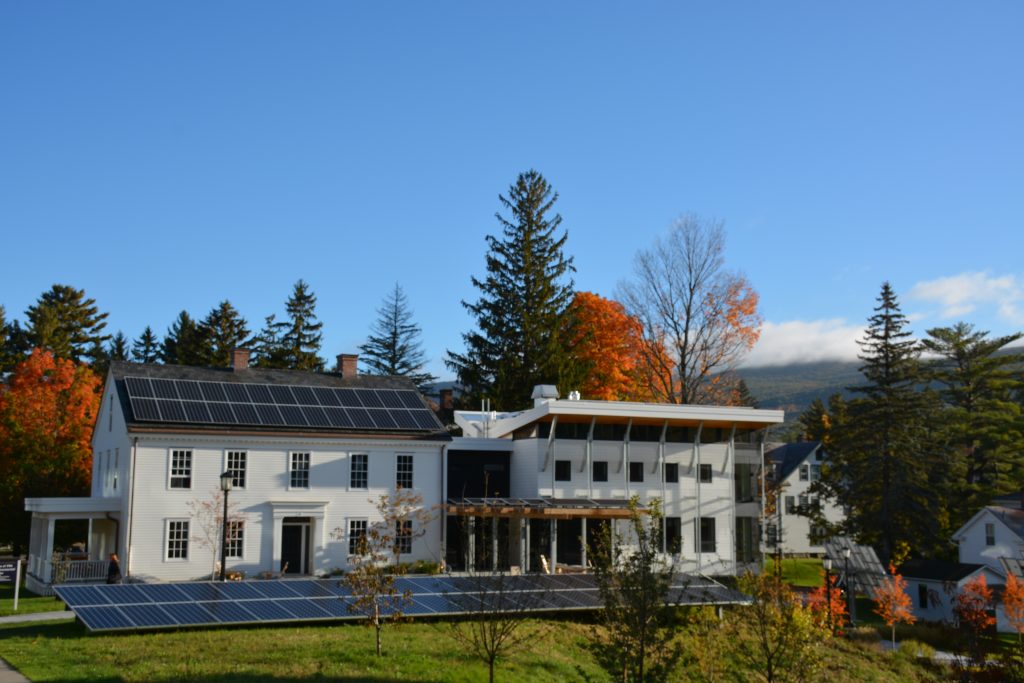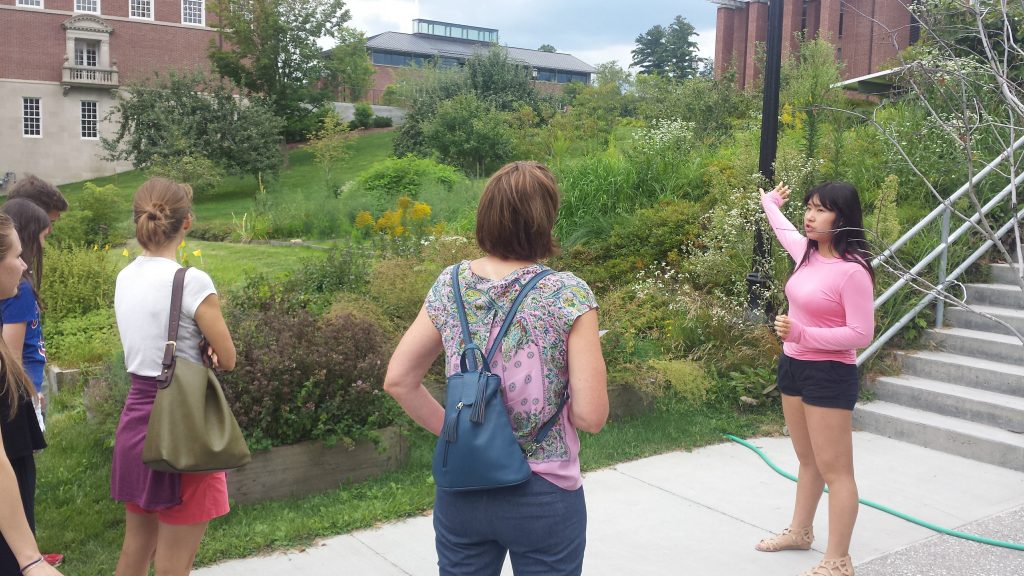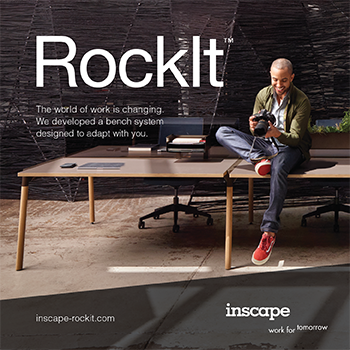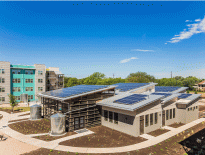No Building’s an Island: Bringing a Community + Campus Approach to Sustainability
Addressing sustainability at the building level is a challenge in and of itself, and it’s often where companies and institutions begin thinking about sustainability in the built environment. Buildings don’t exist in isolation, and there’s a pretty natural progression from considering building-level issues to seeing how they fit into bigger systems. For Williams College, the path from Living Building Challenge to the Living Community Challenge has been a natural one, if winding and occasionally bumpy.
I am the director of the Zilkha Center for Environmental Initiatives at Williams College—essentially the sustainability director. I’ve been in a variety of roles at the college—all related to sustainability—since 2007. I’ve participated in the development of the college’s first emissions goals, creation of the Zilkha Center, and establishment of our first “Green Building Guidelines”. I’ve been at the college long enough to see a variety of projects through from beginning to end, and to learn from our mistakes, challenges, and steady progress. My office is on the second floor of the Class of 1966 Environmental Center, which currently has earned six of the seven petals of the Living Building Challenge (LBC). We still intend to get that last petal—if only through my own personal force of will, if necessary.
When the college committed to designing and building a Living Building, only five Living Certified buildings existed. To say we had no idea what we were in for is an understatement—it has been a wild ride. We’ve laughed (especially about the composting toilets— some humor never gets old, even for grown-ups). We’ve never cried, but it’s been a near thing (we’re over a year into finding a solution for ongoing problems with our rainwater treatment system). We’ve engaged students and faculty in primary research related to the building (I have some awesome electron-scanning microscopy pictures of the “red gunk” that was on our roof for a while). We’ve learned the joy of a Living Building—there’s a mated pair of migratory ducks that visits our erstwhile rain gardens/ponds every spring, and I adore them.
I have to say, I swore that we’d never do another Living Building. My staff and I were spending untold hours troubleshooting our building, and all the while it felt like we were fighting against existing systems: regulatory systems, internal college systems, and the entire “normal” design and construction process, to name a few. However, I’m also an endurance runner, and I know the pattern—I cross a challenging finish line and swear I’ll never do it again. Six months later, I find myself searching for my next race because the fun and reward of the process shines more in my memory than the pain. With that in mind, I mentally left the door to LBC open.

The Class of 1966 Environmental Center at Williams College.
Williams hasn’t stopped building since our LBC project, and if nothing else, LBC broke our assumptions about what was possible. LEED Gold was suddenly seen as a given, Net Zero Energy, Passive House and Petal Certification doable if challenging. We’ve tested out a variety of approaches to sustainability in the built environment, and we’ve learned new things from every one. But in every building project, we came across a host of problems that I started grouping together in my mind as the result of an ad-hoc, building-by-building approach rather than a holistic approach.
My assistant director or I participate in every building committee and process at Williams, so we see a lot of patterns that very few others do. I saw conversations being repeated over and over, the same mistakes repeated, and so many missed opportunities for efficiency and collaboration. We were also painting ourselves into corners. An example: In order to meet our current emissions goals, I assign very ambitious
One of the fundamental skills that sustainability professionals have to develop over time is the ability to think about systems and to see patterns, and it was pretty clear to me that we needed some framework, some way of thinking about sustainability in the built environment that went beyond the building scale. At the same time, we started to reconsider our standard for sustainability in our building projects. For years we had used LEED Gold as a standard (with experimental forays into LBC, Net Zero and Passive House), but there was internal critique of LEED’s approach (especially its focus on design, rather than performance). Campus community members became increasingly interested in some evolving and emerging areas of sustainability in the built environment: Healthy building materials, equity in the built environment and the intersection of buildings and human well-being. While we haven’t figured out exactly what we’re going to do going forward, it’s likely to be a combination of Petal Certification (with the materials, health & happiness and equity petals), energy performance targets and LEED certification. Each of the different standards has a different vision of sustainability in the built environment, and trying to find the perfect fit has felt a bit like doing “sector” plans—useful, but missing something holistic.
Enter Living Community Challenge (LCC). I was certainly aware of the program from attending past Living Future unConferences, but our need for a framework for a holistic approach to sustainability led me to pay more attention and do more research. I have to admit, I talked my leadership into registering as a Living Community Challenge project before any of us really knew what we were getting into, but the timing has proven to be interesting. Williams is entering a strategic planning process, and both sustainability and the built environment are likely to be areas of focus. Williams (and many of its peers) seem to have a split attitude towards standards —we don’t always like committing to third-party verification, but we’re deeply interested in what our peers are doing and how we can contribute to the generation of knowledge and leadership.

Student tour guide describing the edible landscape and pollinator meadow at the Class of 1966 Environmental Center at Williams College.
I view LCC as a valuable tool for our planning process because it gives us a starting point for discussion—we don’t have to do all the work and thinking to figure out what a truly sustainable campus/community is. We’re pretty good at coming to consensus about values and what we care about—it’s sometimes harder to determine the next steps for execution, and that’s where a standard can help. For example, we know that the health/built environment intersection is critically important to our community, and having clear guidance on what that entails makes the discussion and planning easier.
Of course, one of the many tricky parts of a planning process is that work doesn’t just pause while the planning occurs—we still have building projects going forward, and we’re still having internal discussions about the best way to approach sustainability in the process. We have two projects currently in design, and one will pursue a combination of LBC Petal Certification and (hopefully) Passive House. The other went through a feasibility study which included Passive House + LBC Petal compared to LEED Gold 4.0 and will likely pursue the latter. Studying and/or pursuing those two projects in parallel clearly pointed out the need for some campus-scale conversations sooner rather than later.
Given the petals we’re pursuing, we needed to have biophilic design workshops for each project, and we chose to do examinations of equity in the built environment for each as well. The similarities were predictable (and bugged me in the way that duplicated effort always does)—the differences were fascinating, given that both building projects exist on the same campus. As a result of those two projects, we’ve decided to work with ILFI staff this winter to execute a campus-level biophilic design exploration workshop and a version of the Equity Drafting Table. We’re also about to embark on a feasibility study of shifting our central heating plant away from fossil fuels—that’s a conversation that’s occurring at many colleges with significant emissions reduction goals, and we’ve recognized for several years that we need to make a conscious campus choice (soon) about distributed heat pumps vs. central utilities (rather than the building-by-building decisions that we’ve been making to date). It’s an exciting time but frequently chaotic, and we have to balance the need to bring some order that chaos with the fact that progress is rarely a straight line—it’s full of cycles and backtracks and surprisingly productive side-journeys.
I’m also a parent, and on challenging days when the chaos feels like a bit much I sometimes feel like I’m trying to conduct a chorus of small children—you know, where some of them sing some of the time but nobody sings all of the time, you get a general sense of the tune, but one kid wanders off, another takes off her shoes and several are poking each other. On good days, I can realize that we’re learning and incorporating our learning, and the process may be messy but that one of these days, we’re going to all sing in harmony and have that magical moment of seeing the whole, rather than the pieces alone.
Cover photo caption: A view of historic buildings at Williams College, including Lansing Gymnasium, Thompson Memorial Chapel



